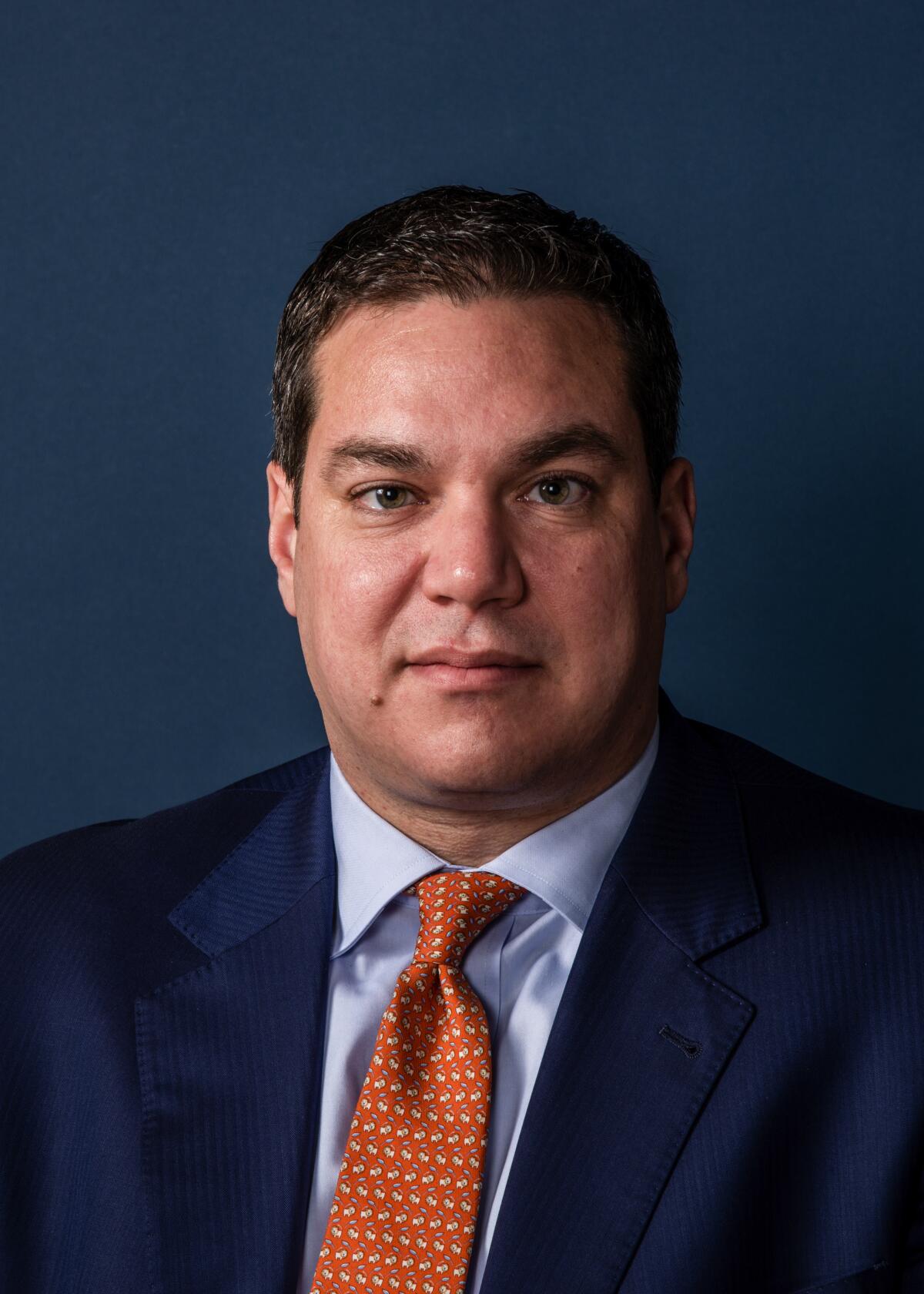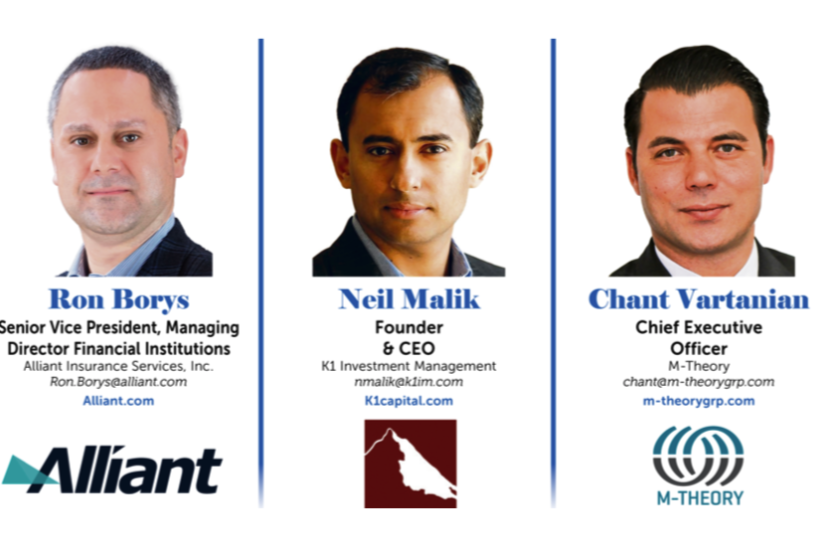Conversation with Jonathan Gilbert and David Sutton on Private Equity and M&A Strategies
- Share via
The Private Equity and M&A Strategies panel is produced by the L.A. Times B2B Publishing team in conjunction with Alliant Insurance Services, Inc. and GHJ.
After the many unprecedented operational changes that businesses in every sector had to make over the last two years, new factors continue to arise in terms of managing private equity or taking the plunge for a merger or acquisition. The economic climate has also forced companies to make changes to the way they do business and to the way they approach their fiscal needs.
To address these issues and uncover the latest trends in the management of private equity and the merger and acquisition landscape, the Los Angeles Times B2B Publishing team turned to two uniquely knowledgeable professionals for their thoughts and important “need-to-know” insights and to get their assessments regarding the various trends that they have been observing in general.
Q: What is the current state of the M&A landscape?

David Sutton, Advisory and Transaction Advisory Services Principal, GHJ: M&A remained red hot through Q1-2022 with well-performing companies and available capital and appetite from buyers. In mid-2022, caution crept in with rising inflation, interest rates and supply chain concerns. Some companies saw a plateau or even decline in top line, margins and/or EBITDA, leading buyers to pause and expand the diligence period to see what would transpire. Deal valuation and structure were also revisited with larger rollover amounts or an increased weighting on earnouts or other deferred considerations. Today, there is still deal volume, but they are taking longer to complete and going through diligence topics that may not have been a concern six months ago. There are no material tax events on the horizon, so the push to complete a deal before year-end should be lower than in prior years, especially as buyers take a heightened risk position.
Q: Does the pandemic continue to affect the private equity landscape in California?

Jonathan Gilbert, Senior Vice President, Managing Director Mergers & Acquisitions, Alliant Insurance Services, Inc.: The aftermath of the pandemic is certainly still having ripple effects across existing portfolio companies as well as in target investments. The main lingering impact does seem to be trouble with the supply chain. It is certainly not as bad as the situation we saw at the Long Beach terminal in 2020 and 2021, but disruption is still occurring. Unfortunately, China continues to shut down and re-open operations while they battle the prolonged presence of COVID-19. Also, our private equity firm and portfolio company clients continue to struggle/push for production and subsequent delivery of goods. These supply chain issues are driving behavioral changes across companies. For instance, companies worked for years to employ just-in-time inventory to limit inventory held on books, improve cash flow and provide other advantages for the business. Additionally, we saw companies cut down a number of suppliers to gain leverage/economies of scale. These efficient processes put in place may not go away altogether, but certainly supply chain risk discussions will be on the top of the pile for deal makers and c-suite executives. We would also expect to see an increase in the use of insurance or even capital market solutions to protect against supply chain risks.
Q: As we move deeper into 2022, what are the private equity hot-button issues and warning signs to be aware of?
Sutton: There is much uncertainty in the economy, including public markets, consumer habits, credit availability and credit pricing. Because of that uncertainty, private equity investors are now highly selective about the opportunities they pursue. Additionally, with those selected opportunities, investors are conducting broader and deeper diligence than ever before because a shift in any one of a number of variables can affect the perception of the target company, change its valuation, or impact its investment thesis. Private equity investors are mandated to invest the capital they are charged with managing, so sitting on the bench and waiting out the uncertainty is not a viable option for most. Together, this leads to a narrowing corridor of opportunity, a need to remain nimble in the opportunities sought, and the structuring of investments to a tolerable level of risk.
The aftermath of the pandemic is certainly still having ripple effects across existing portfolio companies as well as in target investments. The main lingering impact does seem to be trouble with the supply chain.
— Jonathan Gilbert
Q: What are some of the most meaningful trends you have seen in private equity over the last couple of years?
Gilbert: 2021 was a record-breaking year for private equity. In 2022, despite global doom, financial market turmoil and rising interest rates, our private equity clients have remained active. There continues to be a trend of buy and build through add-on acquisitions. While this has been a strategy employed by private equity firms for a long time, the volume of add-on acquisitions is certainly higher than we have seen in nearly twenty years of serving private equity firms. There has also been an increase in firms’ use of post-acquisition teams to oversee one or several portfolio companies to drive growth as well as integrate and extract value from add-on acquisitions faster.
Q: What type of information do prospective investors ask for as part of due diligence that they didn’t ask for in the past?
Sutton: Due diligence is often all-encompassing, and as they say, disclosure is not an option. At a minimum, expect inquiries into accounting, tax and legal matters, often including third-party advisors brought to the deal by the buyer. Well-prepared sellers will have their advisors prepare such information ahead of time. Ultimately, private equity investors are custodians of capital on behalf of their LPs, and they have a duty to investigate all corners of where funds will be deployed, from a reputational and fiscal standpoint. Increasingly, prospective investors are asking for broader and deeper data points and following up with sophisticated questions that the seller is expected to answer comprehensively. With more uncertainty in the market, buyers are also doing more diligence in reconciling performance to cash (versus accounting measures of income) and extending diligence periods to leverage the most potent diligence tool of all: time.
Gilbert: Cybersecurity! Three years ago, unless there was a very apparent and heightened risk at a target, our clients were mostly not conducting fulsome cybersecurity or privacy due diligence. Now we see it done on 70% of deals and we expect this to go to 95-100% in the future. Given the evolving underworld of cybercriminal organizations, this is a real concern. Additionally, based on what we have seen in recent deals, the concern is heightened in deals that involve a first-time seller who may not have focused on cybersecurity historically. Private equity firms should know a target’s posture before a deal announcement is made. Cybercriminals have shown a pattern of targeting deal announcements with the idea that recent acquisitions will be an easy target and investors will do what is needed to avoid customer/market reputational issues, large financial loss or worse. Also, the requirements for cyber insurance hinge on companies having certain key protocols in place (e.g., multi-factor authentication), and if these items are not in place, insurance to pay a ransom or loss may not be available.
There is much uncertainty in the economy, including public markets, consumer habits, credit availability and credit pricing. Because of that uncertainty, private equity investors are now highly selective about the opportunities they pursue.
— David Sutton
Q: What is your forecast for M&A activity volume for the next five years?
Sutton: It depends on which part of the economy you are assessing. Typically, larger deals tend to drop off when there is uncertainty or instability, so I think volumes at the top end of the valuation range will shrink in the near term. That being said, middle market M&A is an engine room with a lot of momentum, and that does not come to a stop. Some volume in distressed deals might pick up, and some traditional deal volume may slow down, but middle market M&A as a whole, I think, will continue to innovate and continue to transact, especially in the medium term. I can see some short-term volume changes, but two years from now, I expect to be just as strong if not stronger than today in terms of volume and valuation.
Q: What role can private equity play in succession planning?
Gilbert: Private equity firms have for many years played a pivotal role in succession planning by helping founders transition business to the next generation of internal or external leaders as well as transition to/from family members. Private equity firms have done a great job partnering with founders to remain involved post-sale while transitioning companies for exponential organic growth, acquisitions, geographic expansion or otherwise. There are certainly creative ways to incentivize sellers to partner with a private equity firm with a focus on winning together, whether through earnout periods, rollover equity or both. With the average age of a business at 51, assisting with succession planning will no doubt be an important part of private equity firms going forward. Often with family-owned companies, there can be the need to untangle complex ownership structures, which can create uncertainty regarding tax positions for buyers or sellers. Private equity firms with the help of a broker can help design a tax insurance policy to solve some or all of the tax risk.
Sutton: After dedicating their lives to building a business, many owners wish to pass it on to sellers who will honor the culture and work with customers and employees in the same fashion. In this case, it is critical to understand the philosophy and behavioral traits of the new owners. Some sellers may prefer knowing the buyer, potentially for several years, before a sale. Private equity can also offer structures that keep the owners/ founders involved for a period of time beyond the initial transaction. This has two effects: Firstly, it can provide for a phased exit over time, which may appeal to owners as they contemplate life after a sale, rather than a sudden exit on the day of a full sale. Secondly, owner involvement beyond the initial sale allows the succession to be managed over time, ensuring appropriate cultural and strategic handovers.
There continues to be a trend of buy and build through add-on acquisitions. While this has been a strategy employed by private equity firms for a long time, the volume of add-on acquisitions is certainly higher than we have seen in nearly twenty years of serving private equity firms.
— Jonathan Gilbert
Q: What role do transaction advisory firms play in the deal flow of mergers and acquisitions?
Sutton: Transaction advisory firms traditionally play the role of dealmaker, transaction diligence or both. For diligence-oriented firms, it is crucial to play a role not only in a particular deal but also to be commercially oriented and to advise clients/professional peers who may be thinking of a transaction. Starting conversations about strategic goals, personal objectives and succession planning can be highly rewarding for clients and can lead to fantastic outcomes that were not previously considered. Transaction advisory firms should do this for clients day in and day out as part of their unwritten obligation to serve clients’ best interests and to guide them through the unknown.
Gilbert: As a transactional advisor firm for insurance due diligence, HR/ employee benefits diligence, transactional risk placement, cybersecurity, privacy as well as technology/IT diligence, we like to think advisors have an important role! In our mind, the role of an advisor is twofold: 1) to help clients understand risks associated with the target (examples include underfunded pension, weak cybersecurity posture, large uninsured environmental or product liability exposure) along with solutions for deal issues and 2) identify strategies post-close to increase EBITDA, reduce risk and volatility, as well as increase liquidity. Any work -- from legal to accounting to environmental -- is focused on one or all of these areas. Also, given that Representations & Warranty insurance has become nearly an absolute must for deals, insurers expect buyers to conduct a certain level of due diligence. Now, while insurance companies do not want to try to dictate a buyer’s process, there are certain minimum expectations that are evolving, along with the growth of the Representations & Warranty insurance market. For instance, today we are seeing most underwriters ask about cybersecurity diligence whereas in years past this may have not been a focus.
With more uncertainty in the market, buyers are also doing more diligence in reconciling performance to cash (versus accounting measures of income) and extending diligence periods to leverage the most potent diligence tool of all: time.
— David Sutton
Q: What’s keeping dealmakers up at night in 2022?
Sutton: In one word, uncertainty. But that can mean many things: inflation, interest rates or geopolitical stability, which in turn has ramifications on foreign exchange and supply chains. Also, COVID is partly in the rearview mirror but not fully behind us. So, there is a lot to digest just from that list, and there will be many more, depending on the sector and specific deal. Like many market drivers, the ability to get a deal done depends on supply and demand: the supply of owners willing to transact with attractive companies and the demand from buyers, which depends on dry powder and credit markets. Dealmakers who can find a way to access both of those populations will do well, but they will still need to navigate the uncertainty of the global economy.


